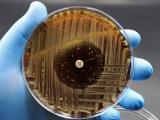Researchers at the California Institute of Technology (CIT) have developed two innovative approaches for getting quick, point-of-care results on bacterial susceptibility to antibiotics.
The methods, described yesterday in two proof-of-concept studies published in PLOS Biology, reduce the time it takes to determine whether Neisseria gonorrhoeae or Enterobacteriaceae are susceptible or resistant to beta-lactam antibiotics to 30 minutes or less, using an approach that measures the accessibility of bacterial DNA after exposure to antibiotics.
Although much work remains and both tests are likely years from clinical use, the authors of the studies say they represent a new pathway toward getting patients treated quickly with the right antibiotic, an innovation that could save lives and limit the spread of antibiotic resistance.
Faster phenotypic tests
The antibiotic susceptibility tests (ASTs) described in the two papers are rapid versions of the phenotypic method of antibiotic susceptibility testing, which determines susceptibility and resistance by directly measuring an organism's response to an antibiotic. Phenotypic methods are the gold standard for susceptibility testing, but they take several days to get a result because they require bacteria isolated from patients to be cultured and then exposed to an antibiotic.
Because of this delay, clinicians often have to treat patients empirically, using antibiotics that may not be effective.
Genotypic ASTs, which predict resistance by screening for the presence of antibiotic resistance genes, are much quicker. But there are hundreds of genes that confer resistance to beta-lactams, and current rapid genotypic tests can detect only a handful of them.
One promising strategy for making phenotypic tests quicker is measuring the concentration of nucleic acid in bacteria after exposure to antibiotics, a method that has been shown to work with certain antibiotics. However, this method relies on antibiotics that directly or indirectly hinder DNA replication in a short period, and beta-lactam antibiotics do not immediately affect DNA replication. For N gonorrhoeae or Enterobacteriaceae, this method would still take 2 to 4 hours to get results.
To get around this problem, the CIT scientists, along with colleagues from the University of California, Los Angeles and the University of Washington, devised a different strategy based on the way that beta-lactams attack bacteria, which is by targeting the enzymes that bacteria use to build the bacterial cell wall. They hypothesized that they could predict susceptibility by measuring the amount of DNA that was accessible after a short exposure to beta-lactams. Increased DNA accessibility would mean that the bacteria were susceptible to the antibiotic.
The two tests developed by the team use the same approach, but are slightly different. To test N gonorrhoeae's susceptibility to beta-lactams, the scientists devised a rapid AST, which they coined nuc-aAST, that measures intracellular DNA accessibility to exogenous nucleases after exposure to beta-lactams. To determine the performance of nuc-aAST, they tested 21 clinical susceptible and resistant N gonorrhoeae isolates exposed to penicillin, cefixime, and ceftriaxone for 15 to 30 minutes, then compared the results with a culture-based AST method.
The other test, pol-aAST, measures the accessibility of DNA in Enterobacteriaceae to polymerase after 30 minutes exposure to beta-lactams. To validate the test, the scientists exposed susceptible and resistant isolates of three major carbapenem-resistant Enterobacteriaceae (CRE) pathogens—Escherichia coli, Klebsiella pneumoniae, and Enterobacter—to ceftriaxone, ertapenem, and meropenem, and compared the results with a culture-based tests. They also performed a pilot test using clinical urine samples.
Both tests provided results quickly—under 30 minutes—and showed good agreement with the gold-standard phenotypic methods.
Why rapid ASTs are needed
A rapid AST for gonorrhea and CRE infections could have significant public health implications. There are more than 78 million gonorrhea infections each year globally, and resistance to the last remaining antibiotic treatments for the sexually transmitted infection is emerging in part because clinicians lack a rapid AST to guide proper treatment.
CRE, meanwhile, are considered an urgent health threat by both the World Health Organization and the US Centers for Disease Control and Prevention because of high mortality rates and their ability to spread quickly in hospitals. Swift treatment with the right antibiotic could help improve treatment outcomes for patients with CRE infections, ensure that correct antibiotics are being used, and limit the spread of resistance.
The scientists say both tests need further development and validation before they can be used in clinical, point-of-care settings. Their hope is that the tests can to be paired with rapid ASTs that evaluate susceptibility to other antibiotics, as well as tests that can rapidly identify bacterial pathogens, to give clinicians a more complete picture of the type of infection they're dealing with, and how to treat it.
"Ultimately, this new generation of AST diagnostics will be integrated with the rapid [identification] methods being developed and with future rapid [nucleic acid]-based AST methods for additional antibiotics and pathogens," they wrote.
























